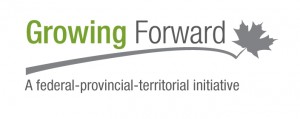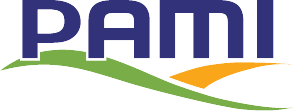Beneficial Management Practices for Agricultural Tile Drainage in Manitoba
This fact sheet series offers the latest technical information on Beneficial Management Practices (BMPs) for tile drainage in Manitoba.
- Factsheets - Introduction
- Professional Services – EA-01
- Nutrient Management – IF-01
- Cover Crops – IF-02
- Soil Properties and Management – IF-03
- Controlled Tile Drainage – IF-04
- Site-Specific Tile Drainage Design – IF-05
- Bioreactors – EF-01
- Saturated Buffers – EF-02
- Tile Water Recycling – WS-01
- Constructed Wetlands – WS-02
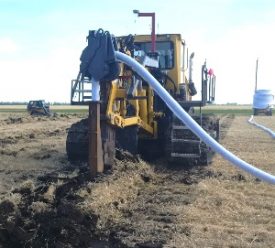
Purpose
This fact sheet series offers the latest technical information on Beneficial Management Practices (BMPs) for tile drainage in Manitoba. Specific to a given BMP, each document addresses its objectives, fundamental components, suitability under Manitoba conditions, scientific basis and remaining gaps in understanding and feasibility. Municipal officials, farmers, agronomists, drainage practitioners, teachers and students can all become substantively informed about water management by reading this fact sheet series.
In particular, the intent of the series is to describe the current, wide-ranging potential for these BMPs to improve the effectiveness and environmental performance of tile drainage systems in Manitoba. Through additional research and on-farm experience, the suitability of these BMPs to provide agronomic and economic benefits, as well as mitigate environmental risks, in this province may continue to evolve.
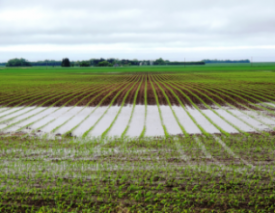
Drainage in Manitoba
In Manitoba, water management has played a major role in the establishment of urban and rural communities as well as a thriving agriculture industry. Under both current and predicted future conditions, drainage is expected to remain vital to maintaining the productivity of farms and the protection of rural and urban infrastructure. Effectively and sustainably managing drainage is a complex challenge and shared responsibility that spans provincial and municipal governments, landowners, industries and the public.
To varying degrees, most agricultural soils must be artificially drained for optimal crop production. Excess water in the soil profile can delay seeding and other field activities, stifle root growth, hamper plant respiration, reduce crop yields and increase both spatial and temporal yield variability. Historically, in Manitoba, the most commonly used method to remove excess water from fields has been surface drainage.
Tile drainage is a regulated practice under the authority of The Water Rights Act, which is administered by Manitoba Sustainable Development.
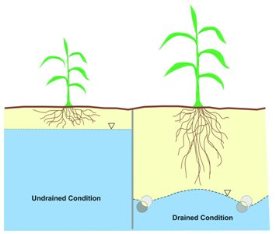
What is tile drainage?
Tile drainage, also known as subsurface drainage, is the practice of placing perforated pipes below ground level to remove excess water from the soil profile. As excess water enters tile pipes and flows away, the water table drops below the rooting zone, shrinking the zone of saturation.
A tile drainage system typically includes a number of smaller diameter lateral pipes that empty into an increasingly larger main pipe. The water in the pipes flows by gravity to the edge of an agricultural field where it is released, via gravity or pumped using a lift station, to a ditch, municipal drain or natural watercourse.
Manitoba growers are increasingly viewing tile drainage as a viable water management option for their farms. The potential agronomic and economic benefits motivating farmers include earlier planting, quicker and more uniform soil drying and warming, deeper crop rooting, timely application of inputs, reduced soil erosion, reliable field access at harvest, diminished yield losses and lower yield variability.
The rising adoption of tile drainage in Manitoba has, however, prompted questions regarding its potential effects on water quantity and quality. Although tile drainage can have many agricultural benefits, it may have implications for the environment and downstream landowners when implemented. BMPs suitable to Manitoba conditions may enable producers to reduce risks and optimize the performance of their tile drainage systems.
Objectives of Beneficial Management Practices
In this publication series, tile drainage BMPs have been examined within the framework of three environmental objectives. Targeting a particular outcome(s) is critical in selecting the appropriate BMP or suite of BMPs for a given situation.
![]() Conserving Water
Conserving Water
Draining only what is necessary to achieve improvements in trafficability, crop growth and other aspects of production should be a prevailing principle in water management. In fact, holding back water may be desirable and feasible with an enhanced drainage system.
Several means exist to conserve water while still improving drainage. These methods include practices that: hold back drainage water within the soil profile for crop use during the growing season; avoid the interception and draining of aquifers; or capture tile outflow for recycling.
![]() Improving Water Quality
Improving Water Quality
Reducing risks to downstream water quality should be a critical objective when adopting tile drainage. Downward movement of nutrients with water through the soil profile, for instance, can lead to their escape via tile drainage networks. Implementing nutrient management practices, enhanced tile drainage design or edge-of-field treatment of tile water outflow may substantially reduce risks to downstream water quality.
![]() Improving Soil Health
Improving Soil Health
The quality of a soil is critical to its agricultural productivity and ecological function. The adoption of tile drainage itself can protect or improve the condition of a soil by, for example, reducing or eliminating erosion and compaction. Taking preliminary steps to assess a site for its suitability and detect any potential complications are one way to strengthen prospects for a successful project and a healthy soil.
Categories of Beneficial Management Practices
BMP categories identify the nature of the management practice in relation to the geographic context of the agricultural landscape, as well as the broader environment.
The four categories are:
- In-Field (IF) – practices that are undertaken as part of the tile design and operation OR the cropping and soil management activities, and that occur within the boundaries of the field.
- Edge-of-Field (EF) – practices employed at the tile network outlet, typically located at the edge of the field.
- Watershed (WS) – practices adopted either on agricultural land or adjacent to it, that have have watershed-scale links and implications.
- Evaluation and Advice (EA) – addition of professional scientific and engineering investigation, evaluation and advice including geology, hydrogeology, pedology, agronomy, hydrology and engineering design considerations.
Ten Beneficial Management Practices
The following ten BMPs are addressed in this publication series (Table 1). Please click on the BMP name to access a particular fact sheet.
Table 1. Applicability of individual BMPs in this fact sheet series to each of the objectives.
| BMP Name | BMP Category | Conserving Water | Improving Water Quality | Improving Soil Health |
| Professional Services – EA-01 | EA | |||
| Nutrient Management – IF-01 | IF | |||
| Cover Crops – IF-02 | ||||
| Soil Properties and Management – IF-03 | ||||
| Controlled Tile Drainage – IF-04 | ||||
| Site-Specific Tile Drainage Design – IF-05 | ||||
| Bioreactors – EF-01 | EF | |||
| Saturated Buffers – EF-02 | ||||
| Tile Water Recycling – WS-01 | WS | |||
| Constructed Wetlands – WS-02 |
